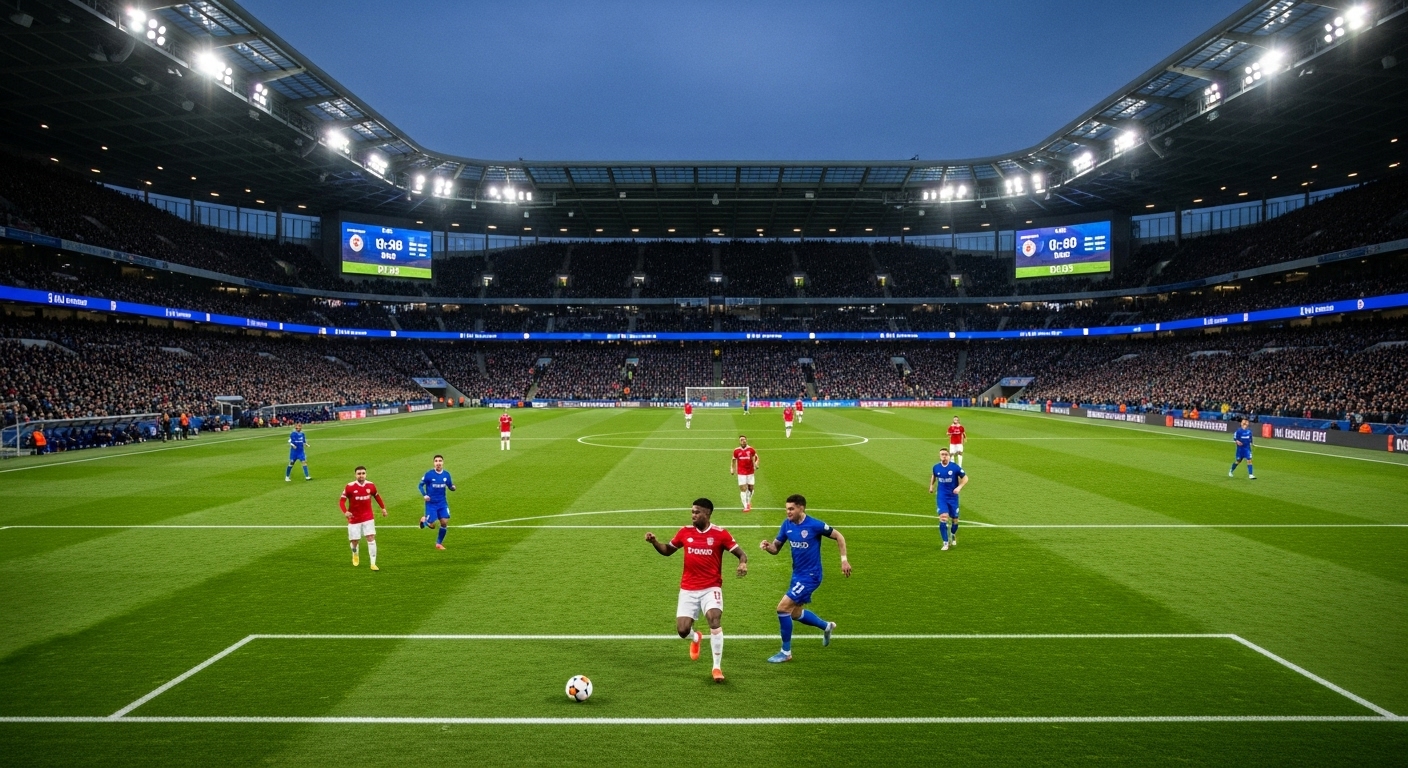Soccer, the world’s most popular sport, is as much about the action on the pitch as it is about the drama off it. Few things capture the imagination of fans quite like the transfer market, where players move between clubs for record-breaking sums, shocking announcements, and dreams of glory. Transfers are more than business deals; they reshape clubs, redefine careers, and sometimes even change the history of the sport itself. Some transfers are remembered because of the astronomical fees involved, others because of the unexpected success or failure that followed, and some because of the sheer impact they had on the global soccer landscape.
Over the years, certain transfers have stood out not just for their financial figures but also for their cultural significance. These moves illustrate how soccer has evolved from a sport to a global business, with star players becoming icons, clubs transforming into international brands, and transfer windows turning into spectacles followed by millions. Examining the top transfers in soccer history reveals how these deals redefined teams, players, and the sport itself.
The Evolution of the Transfer Market
To understand the significance of historic transfers, it is important to reflect on how the transfer system has evolved. In the early decades of professional soccer, transfer fees were modest, reflecting the relatively limited financial power of clubs. Players often moved for sums that today would barely cover a youth academy contract. However, with the advent of television broadcasting, sponsorships, and the commercialization of the sport in the late twentieth century, the transfer market began to grow dramatically.
By the 1990s, television rights deals and global fan bases transformed soccer into a multi-billion-dollar industry. Clubs realized that signing marquee players not only strengthened the squad but also expanded commercial opportunities. Jersey sales, sponsorships, and global brand exposure became intertwined with player acquisitions. This shift turned the transfer market into one of the most dynamic aspects of modern soccer.
The early 2000s marked the beginning of what many call the “galáctico era,” when Real Madrid’s president Florentino Pérez pursued a policy of signing the biggest names in soccer each summer. This strategy not only changed the trajectory of the club but also raised expectations for transfer activity across Europe. Today, transfer records are broken almost every few seasons, with fees climbing higher as clubs compete for talent in a globalized market.
Zinedine Zidane to Real Madrid in 2001
One of the defining transfers of the early modern era was Zinedine Zidane’s move from Juventus to Real Madrid in 2001 for around 77 million euros, a world-record fee at the time. Zidane, already a World Cup and Ballon d’Or winner, was widely regarded as one of the most talented midfielders of his generation. His arrival in Madrid was not only about strengthening the squad but also about building the galáctico brand that Pérez envisioned.
The transfer proved to be an extraordinary success. Zidane delivered one of the most iconic goals in Champions League history during the 2002 final against Bayer Leverkusen, securing Madrid’s ninth European Cup. His elegance on the field and leadership qualities cemented his status as a legend, and the transfer became a blueprint for how investing in a superstar could deliver both sporting and commercial success.
Cristiano Ronaldo to Real Madrid in 2009
Few transfers have had the seismic impact of Cristiano Ronaldo’s move from Manchester United to Real Madrid in 2009 for a then-record fee of 94 million euros. At United, Ronaldo had already become a global superstar, winning the Champions League, three Premier League titles, and the Ballon d’Or. His move to Madrid, however, elevated both him and the club to unprecedented heights.
During his nine seasons at Real Madrid, Ronaldo shattered records, becoming the club’s all-time leading scorer with over 450 goals. He led Madrid to four Champions League titles in five years and redefined what it meant to be a modern forward. Beyond the pitch, Ronaldo’s global appeal turned Real Madrid into the most recognizable sports brand in the world, with massive merchandise sales and sponsorship deals. This transfer remains one of the most significant in soccer history, proving that spending big on the right player can deliver returns that go far beyond the initial investment.
Neymar to Paris Saint-Germain in 2017
The summer of 2017 brought one of the most shocking transfers the sport has ever seen. Neymar’s move from Barcelona to Paris Saint-Germain for a staggering 222 million euros obliterated the previous transfer record. PSG triggered his release clause, a figure that seemed almost untouchable at the time, instantly changing the dynamics of the global transfer market.
Neymar’s transfer was about more than just footballing ability. It was a statement of intent by PSG and their Qatari owners, signaling that the French club was determined to join the elite of European soccer. On the field, Neymar brought flair, creativity, and goals, helping PSG dominate domestically. While the Champions League has remained elusive, the transfer transformed PSG into a global brand, attracting sponsors and boosting its profile worldwide. Neymar’s move also had ripple effects, destabilizing Barcelona and sparking a chain reaction of transfers that reshaped European football.
Luis Figo to Real Madrid in 2000
Few transfers have stirred as much controversy as Luis Figo’s move from Barcelona to Real Madrid in 2000. At the time, Figo was Barcelona’s star player and captain, adored by fans and a symbol of the club’s identity. His decision to cross the bitter rivalry and join Real Madrid for 62 million euros shocked the soccer world and enraged Barcelona supporters.
The fallout was intense. Figo was vilified at Camp Nou, infamously subjected to objects being thrown at him during matches, including a pig’s head. However, from Madrid’s perspective, the transfer was transformative. Figo became the face of the galáctico project and helped Madrid win La Liga and the Champions League. The deal also highlighted how transfers can transcend sport, touching on cultural and political sensitivities, especially in the context of the fierce rivalry between Real Madrid and Barcelona.
David Beckham to Real Madrid in 2003
When David Beckham moved from Manchester United to Real Madrid in 2003, the transfer was as much about commercial impact as it was about sporting success. Beckham was one of the most marketable athletes in the world, known for his style, charisma, and global fan base. His arrival in Madrid for around 37 million euros expanded the club’s reach into markets such as Asia and the United States, where Beckham’s celebrity status resonated beyond soccer.
Although Beckham’s time in Madrid did not yield as many trophies as hoped, his transfer is remembered as one of the most commercially significant in history. It demonstrated how a player could become a cultural icon as well as a sporting asset, paving the way for the modern blending of sport, entertainment, and fashion.
Kylian Mbappé to Paris Saint-Germain in 2018
Another monumental transfer was Kylian Mbappé’s move from Monaco to PSG in 2018 for around 180 million euros, making him the second-most expensive player in history. At just 19 years old, Mbappé had already announced himself on the world stage with his performances at Monaco and his stunning World Cup campaign with France in 2018.
PSG’s investment in Mbappé was about securing not only a generational talent but also the future face of world soccer. Since joining PSG, Mbappé has dominated Ligue 1, become one of the top scorers in Europe, and led France to further international success. His transfer highlights how clubs are willing to invest astronomical sums not just in proven stars but also in players with long-term potential to dominate the sport for a decade or more.
The Cultural Impact of Transfers
Top transfers are not only about the money spent or the trophies won. They also reshape the cultural narrative of the sport. When a superstar joins a club, it energizes fan bases, boosts morale, and often attracts new supporters from around the globe. Transfers can also trigger rivalries, create legends, or leave scars that last generations, as seen in the case of Luis Figo.
Moreover, transfers affect the business of soccer. Merchandise sales spike when a marquee signing is announced, with jerseys bearing the new player’s name often selling out within hours. Social media follows, television ratings, and sponsorship deals also soar, proving that transfers are as much about global marketing as they are about sporting ambition.
The Future of Soccer Transfers
The transfer market continues to evolve, with financial powerhouses like Manchester City, Chelsea, PSG, and Saudi-backed clubs reshaping the landscape. Release clauses, agent fees, and player wages now play central roles in determining how deals unfold. Emerging trends suggest that the next wave of top transfers may involve not only record-breaking fees but also creative financial arrangements such as profit-sharing, image rights deals, and digital partnerships.
Younger stars like Erling Haaland and Jude Bellingham represent the new generation of players around whom the future of soccer will be built. Their eventual transfers to elite clubs are already reshaping expectations about what defines a top deal. With the globalization of the sport and the influence of technology, transfers are likely to become even more significant cultural events in the years ahead.
Conclusion
The top transfers in soccer history are more than just transactions; they are milestones that have redefined clubs, elevated players, and shaped the sport itself. From Zidane’s elegance at Real Madrid to Neymar’s record-breaking move to PSG, these transfers illustrate how soccer operates at the intersection of sport, business, and culture. They capture the drama, ambition, and passion that make soccer the global phenomenon it is today.
As the sport continues to grow and evolve, new transfers will inevitably surpass old records, both financially and in cultural impact. Yet the legacy of historic moves remains indelible, reminding fans that in soccer, the action off the pitch can be just as transformative as what happens on it.

